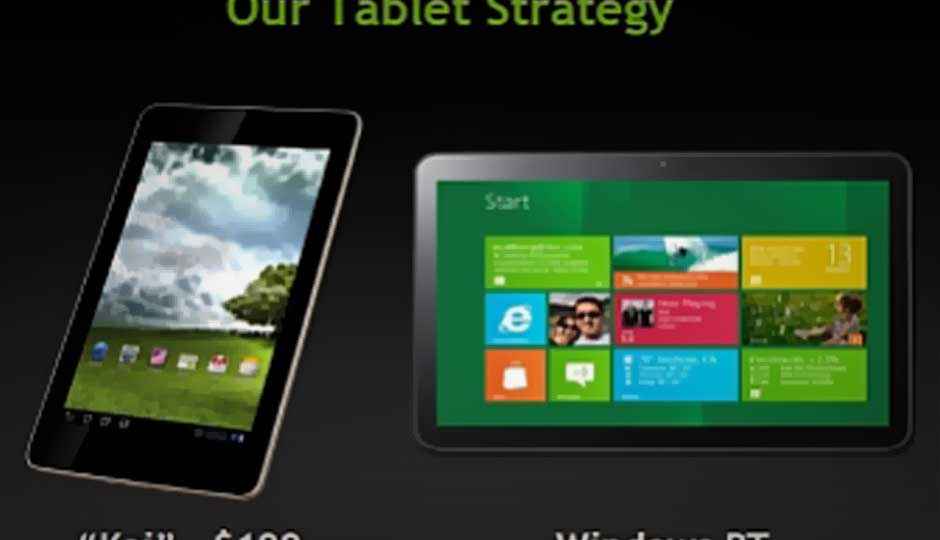Nvidia serves up ‘Kai’ platform for $199 Android tablets

Nvidia is wooing tablet makers with a new platform for a Tegra 3-based tablet running Android Ice Cream Sandwich that could theoretically be priced as low as $199, but is even more excited about opportunities in the tablet space that will emerge when Windows 8 is released.
 Survey
SurveyThe graphics chip maker introduced an Android-based tablet platform code named Kai at its annual stockholders meeting held during the GPU Technology Conference last week. First spotted by The Verge, Nvidia‘s vice president of investor relations Rob Csonger walked investors through the company’s plans for using “the secret sauce that’s inside Tegra 3” to deliver a quad-core tablet at a price matching the Amazon Kindle Fire’s by the end of the year (see Kai introduced at the 33:20 mark of this webcast).
“Last year, our tablet strategy was one of the areas … we would have liked to have gone a little bit differently. It took a little while to develop some good tablets and I think those tablets were priced a little bit more expensively than the market could bear,” Csonger told Nvidia shareholders.
The graphics chip maker released its third-generation Tegra System-on-a-Chip last November and it was used by Asus in the Eee Pad Transformer Prime tablet-laptop convertible introduced in December (read our impressions).
The Transformer Prime is currently priced at $499 (Rs. 49,999). Csonger said Amazon’s $199 (Rs. 13,699) Kindle Fire, while delivering “disappointing performance,” had pointed Nvidia in the direction of pricing that would be more attractive to tablet buyers in a market where Apple’s iPad is the runaway winner at the high end.
“So first of all, our strategy on Android is simply to enable quad-core tablets running Android Ice Cream Sandwich to be developed and brought out to market for a $199 price point,” Csonger said.
“The way we that we do that is with a platform that we’ve developed called Kai,” he continued. “So this uses a lot of the secret sauce that’s inside Tegra 3 to allow you to develop a tablet at a much lower cost by using a lot of innovation that we’ve developed to reduce the power that’s used by the display and to use lower cost components within the tablet.”
Csonger went on to say that Nvidia was actually even more excited about the possibilities for Tegra 3-based tablets built for Windows 8, Microsoft’s next-generation operating system due out later this year.
“Probably the most exciting opportunity for us, however, in the tablet space is a discontinuity and a disruption that’s going to occur in the PC world, which is the end of the Windows and Intel, or Wintel monopoly,” he said.
“At the end of the is year, Microsoft is releasing Windows 8 with a new capability, Windows RT, and the ability here to run Windows on ARM is a very big opportunity for Nvidia. Whereas in the phone space, we are moving into the phone space and there are incumbents there, when it comes to Windows and PCs, welcome to Nvidia’s home court. This is something we know very well and have done for many years.”
